Ten steps towards greener cooking and eating
Tips and recipes to help save the world one bite at a time.
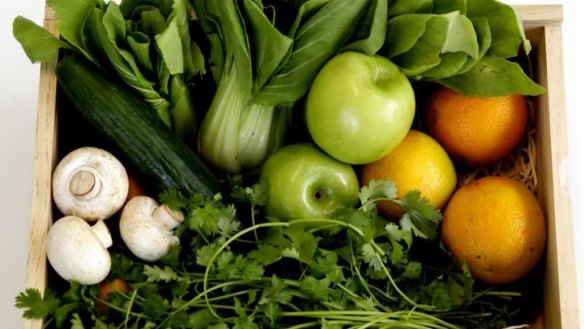
We all know there's a lot we could and should be doing to be more sustainable eaters, but it's hard to know what really makes a difference and it can be overwhelming to sift through the flood of information. Let's not be hamstrung.
Small steps can lead to large transformations as much through awareness as concrete change and we might as well Do Something! Start small, think big, eat green and help save the world one bite at a time.
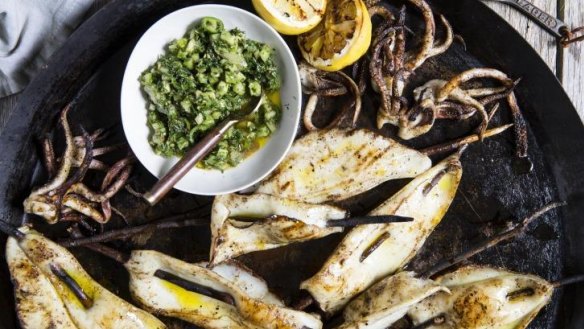
1. Eat sustainable seafood
Eat small fish and shellfish rather than large slow-growing fish nearer the top of the food chain. That means sardines or calamari (see recipe below) instead of tuna and swordfish. Buy Australian!
2. Eat what's cheap and plentiful
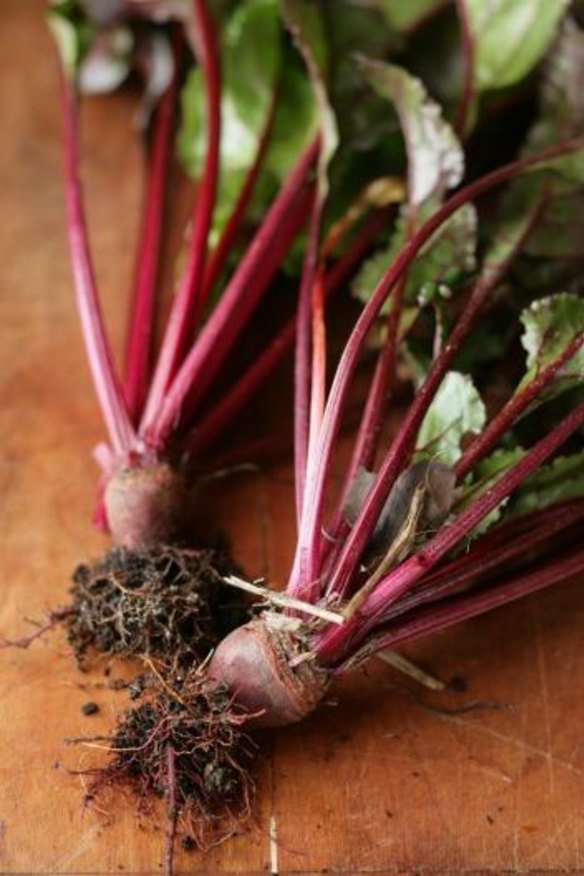
Price is a great indicator of seasonality and local produce. We're used to eating such variety that it can seem weird to eat the same fruit or vegetable for weeks on end but it should be quite normal. Consider buying just what you need for today and tomorrow. The whole notion of stocking up can lead to squishy vegetables which end up in the bin.
3. Carry your vessel
Keep a water bottle and reusable coffee cup with you whenever possible, or just take the extra five minutes and have your coffee to-stay rather than to-go. Always carry shopping bags – you never know. Keep a couple in the car and one in your bag.
4. That's not a scrap!
Put celery leaves in a salad or use as a garnish for soup or risotto. Eat beetroot leaves and stems. Broccoli stems are sweet and crunchy: cut them into sticks and eat with dips or use them as a pizza topping. Look at Sarah Wilson's book Simplicious for other ideas on how to use leftovers.
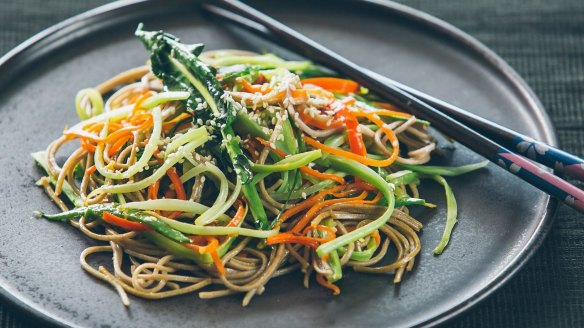
5. Know your meat
If you eat animals, show some respect by thinking hard before eating them. Choose free range. Yes, it's more expensive but just eat less. Ditch anonymous meat, such as the ham and chicken at most sandwich shops and in pub parmas. Jump on to ideas such as #meatfreeMonday and the RSPCA's Choose Wisely campaign which lets restaurants and cafes highlight the humane choices they make.
6. Be #grexy
Sign up to the Sustainable Table's Give a Fork campaign and take on a #grexy (that's "green" and "sexy") challenge. Participating restaurants are putting special efforts into sustainable dishes throughout April. Show your support by dining at places including Hawthorn Common and Barry in Melbourne, Black Star Pastry and Cornersmith in Sydney, and Local Press Cafe in Canberra.
7. Eat consciously
Eat at the table, not in the car, not at a screen. The more mindful and social your eating is, the better the quality is likely to be.
8. Grow something
Even failing at growing is a win (that's what I tell myself), because you increase your appreciation of the effort and resources it takes to grow food successfully.
9. Be less wasteful
As well as carrying containers and bags, that means composting, reducing packaging at point of sale (buy dry goods in bulk from shops like The Source Bulk Foods and Rita's Coffee and Nuts at South Melbourne Market). Recycle soft plastics that you can't avoid: Coles has in-store recycling bins for wrappers and plastic bags. Have a shelf or box in the fridge and pantry where you put stuff that needs to be used up but be sceptical of use-by dates, too. Embrace ugly fruit and dented cans; see @uglyfruitandveg on Twitter.
10. Get smart with appliances
Fill the dishwasher before using it. Don't pre-rinse. Vacuum the coils at the back of your fridge. Run your fridge a bit warmer. Clear out the freezer: either eat it or ditch it (compost, preferably) but don't continue using power to keep it frozen.
Recipes
Calamari with herb crumb
Ensure you buy Australian calamari, which is fast-growing, short-lived and a prolific breeder. They are usually caught using nets which target them specifically, thus bycatch is not a big issue.
There are other sustainable elements to this recipe. We use up stale bread, we throw in the herb stalks because they're full of flavour and texture too, and we just use one item for prep and one pan for cooking and serving, saving on washing up. Swap out the herbs for basil, sage, oregano or whatever you have.
This recipe also works well with sardines, which are very sustainable and incredibly cheap – I recently bought a whole bunch for 30 cents each. Ask your fishmonger to prepare them or watch Karen Martini's video.
500g calamari, cleaned
70g stale bread, roughly torn
1 tsp ground cumin
1 tsp flaked salt
handful coriander leaves and stems
larger handful parsley leaves and stems
finely grated zest and juice of ½ lemon
2 tbsp olive oil, plus extra if necessary
150g rocket, spinach or other leaves
1. To prepare the calamari, cut large bunches of tentacles in half vertically or keep whole if small. The two long tentacles are usually trimmed, but can also be eaten. Cut wings from hood, and slice along the hood to open it out into a flat sheet. Lightly score skin-side in a cross-hatch pattern, then cut into approximately five-centimetre pieces and set aside.
2. Blitz bread, cumin, salt and herbs in a food processor until a rough crumb has formed. Stir through lemon juice and zest. (If you don't have a food processor, chop the bread and herbs with a knife and place in a bowl, then stir through the cumin, salt and lemon juice and zest.)
3. In a large pan over medium-high heat, add the olive oil and heat until it shimmers. Add the crumb and cook, stirring occasionally until golden-brown and slightly crisp.
4. Push crumb to the edge of your pan and add more oil, if necessary, to cook calamari. Again, wait until it shimmers before adding the seafood. Cook calamari on both sides, until it becomes opaque and lightly curled. Stir in crumbs.
5. Turn off heat and add rocket or spinach to the pan. Toss lightly together then take pan to the table to serve.
Serves 4
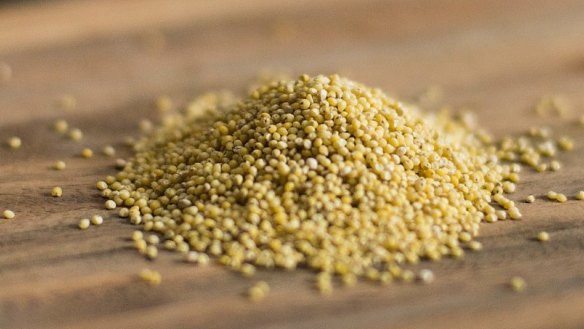
Millet and beetroot pilaf
Millet is a staple crop in Africa, India and China but we don't eat so much of it here … yet. It needs relatively little water and is able to tolerate high temperatures, so chances are we'll be eating more of it as climate change affects crops and yields in decades to come.
This recipe calls for baby beetroot with small, sweet leaves. If you can only find large beetroot, cut it into three-centimetre cubes before roasting.
250g millet
500g chicken stock (or use vegetable stock or water)
1 bunch baby beetroot (about 700g), leaves retained
1 red onion, in thin slices
1 tbsp olive oil, plus extra for dressing
1 tsp flaked salt, plus extra to taste
1 tsp ground coriander
1 tsp mustard seeds
2 tbsp sherry vinegar, plus extra for dressing
1 tbsp raw sugar
¼ cup currants
⅓ cup pistachios, unsalted, roughly chopped
1 piece preserved lemon, flesh removed and skin finely sliced
freshly ground pepper, to taste
1. Place millet in a steamer basket over chicken stock. If steamer holes are large, line basket with baking paper so millet doesn't fall through. Steam for 20 minutes. Remove lid and fluff millet with a fork. Turn into a bowl to cool slightly. (Retain stock, if using, for another time.)
2. Preheat oven to 190C. Chop beetroot from stems, wash in cold water and place in roasting dish with onion, olive oil, salt, coriander and mustard seeds. Stir, then roast for 40 minutes, or until a knife goes easily through beetroot.
3. Wash beetroot leaves and stems and cut leaves from stems. Finely chop stems. Place vinegar, sugar and a big pinch of salt in a small pot and bring to the boil, stirring to dissolve sugar. Remove from heat, place beetroot stems in hot liquid and steep for 20 minutes. After 15 minutes, add currants to pickling liquid for the final five minutes. Drain beetroot stems and currants, discarding liquid.
4. Toss millet with roasted beetroot, beetroot stems and leaves, currants, pistachios and preserved lemon. Drizzle with extra olive oil and sherry vinegar to taste, along with salt and pepper. Serve warm or cool.
Serves 4
